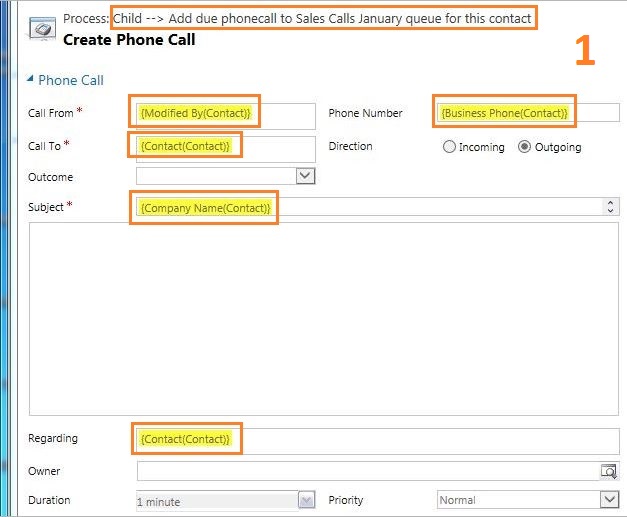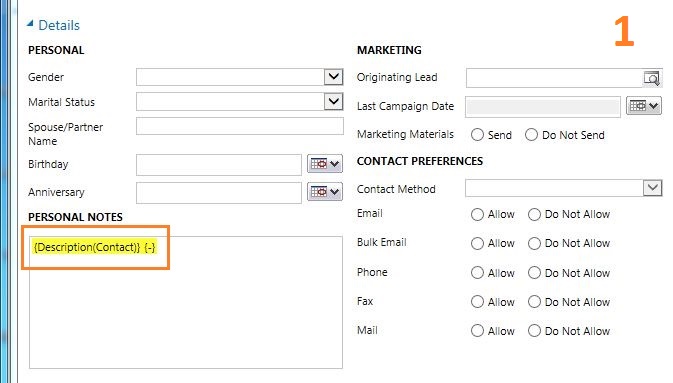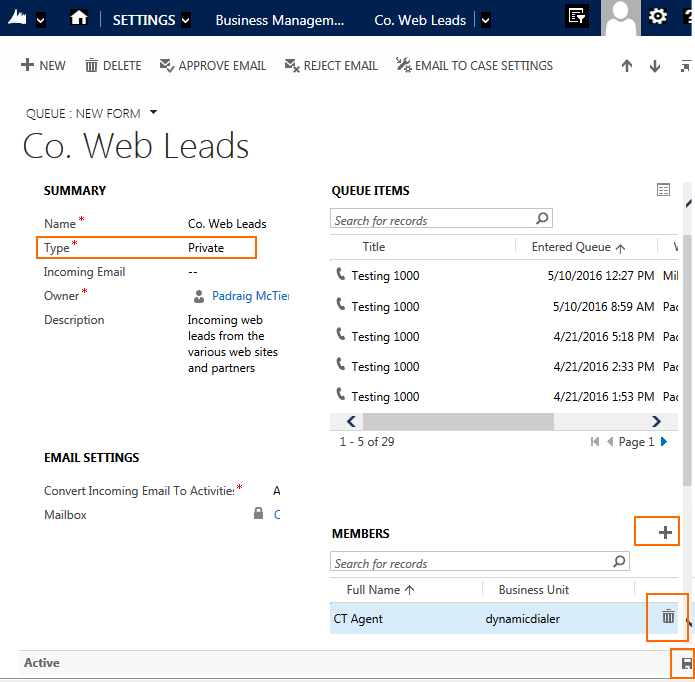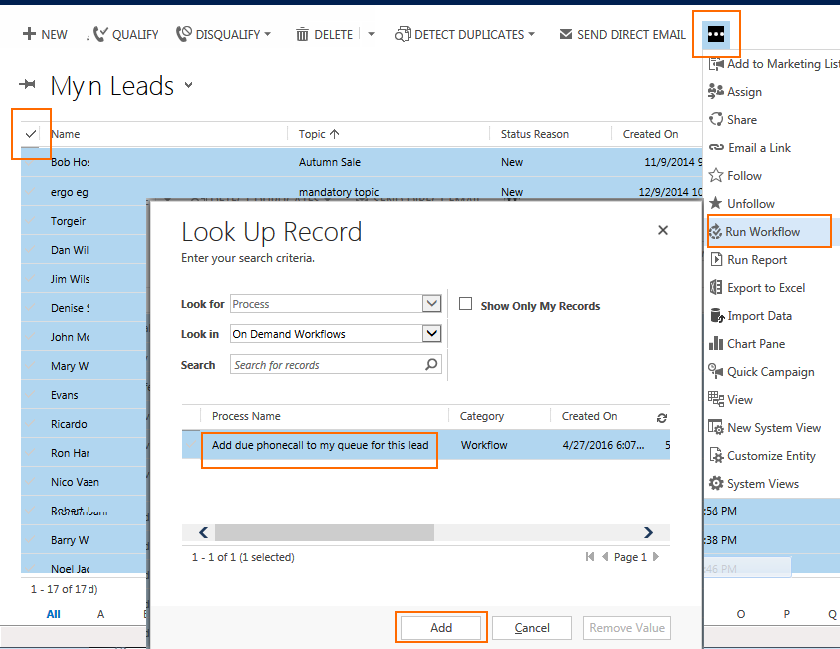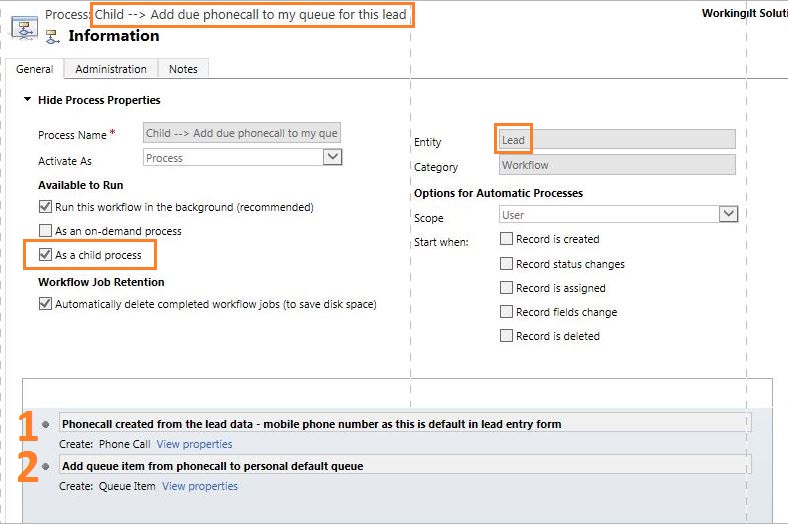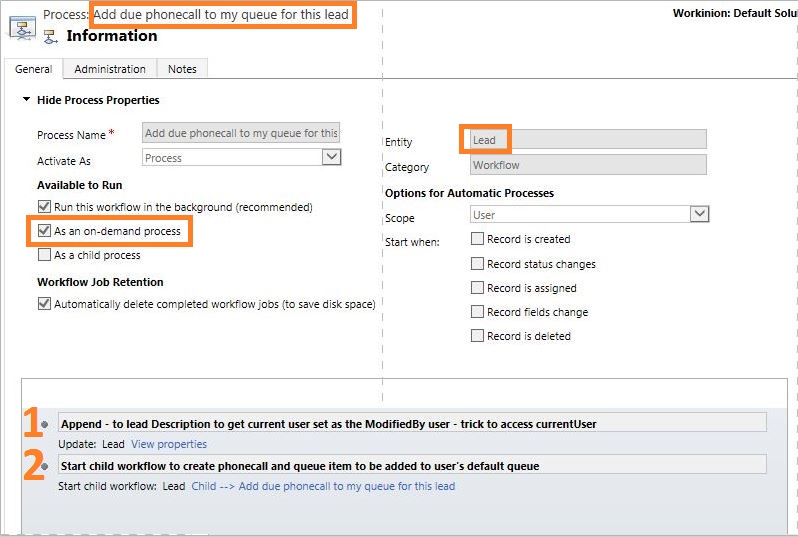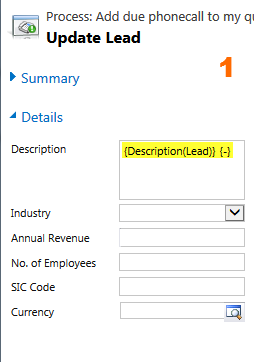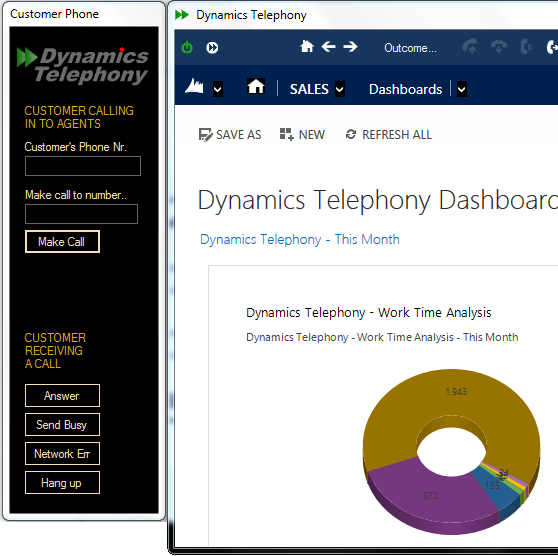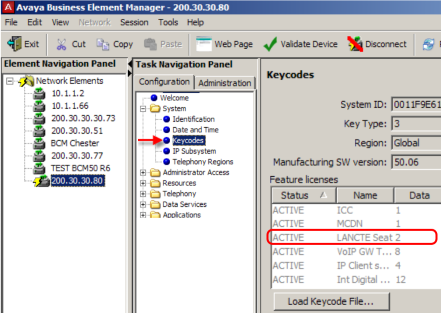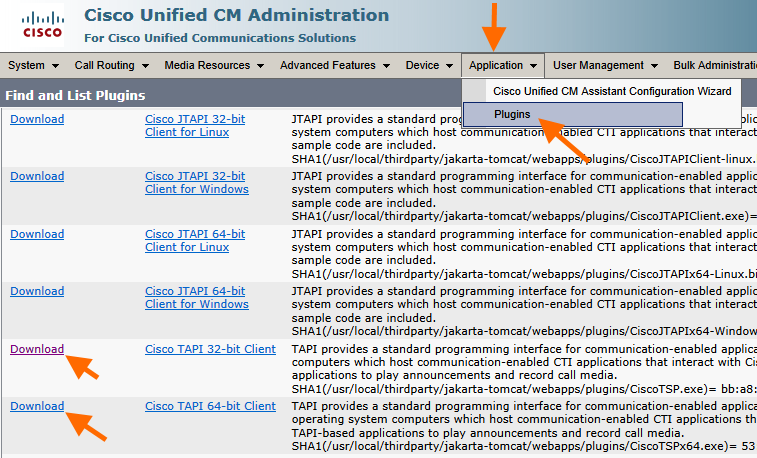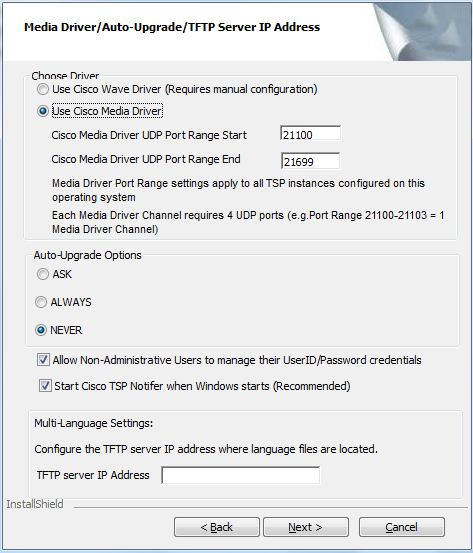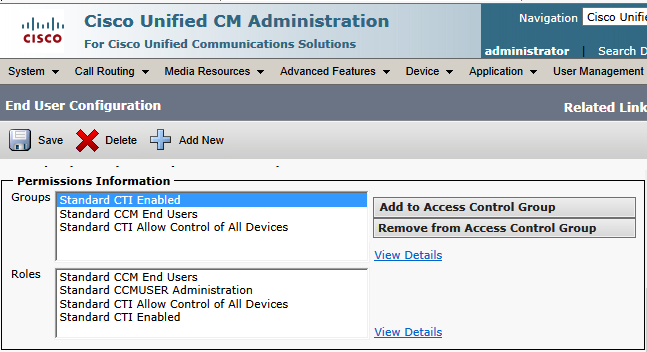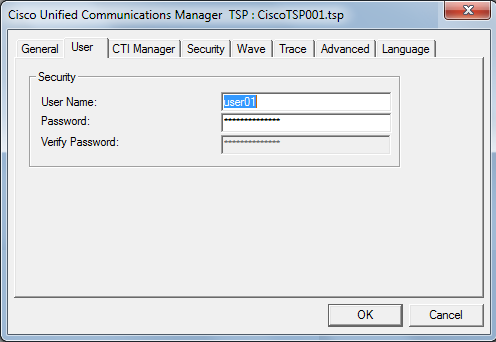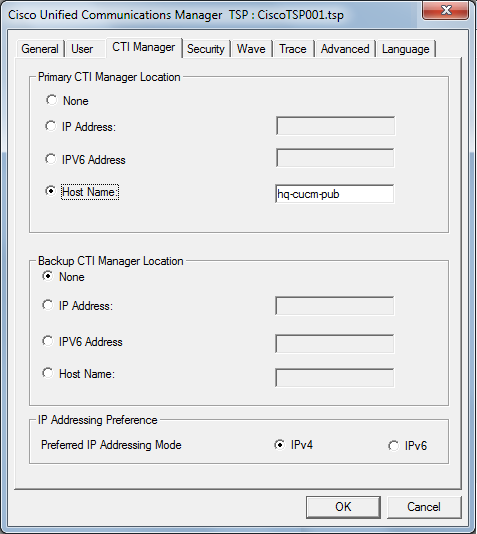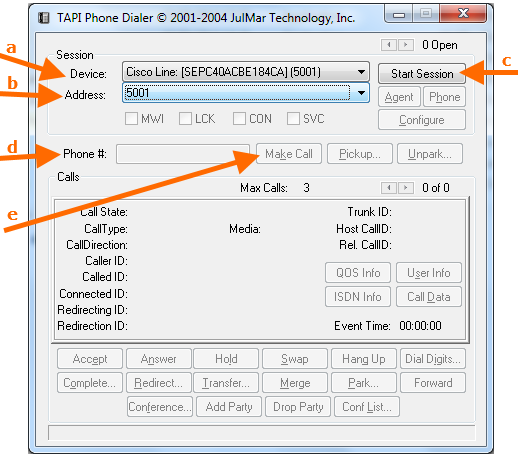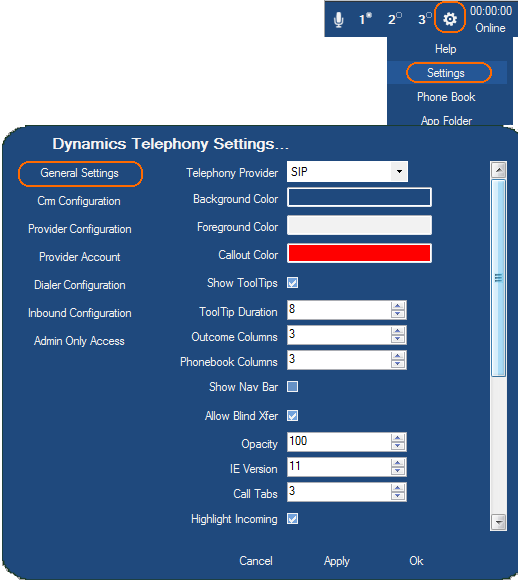This workflow will be available to a contact, or a set of selected contacts. It will create a phonecall for each contact and put it in a queue of your choice. Now, with Dynamics Telephony Queues enabled, you can process each contact using the progressive dialer.
How it is used
Filter down to the contacts you want to add to progressive dialing. Select all and run the workflow per the screenshot below.
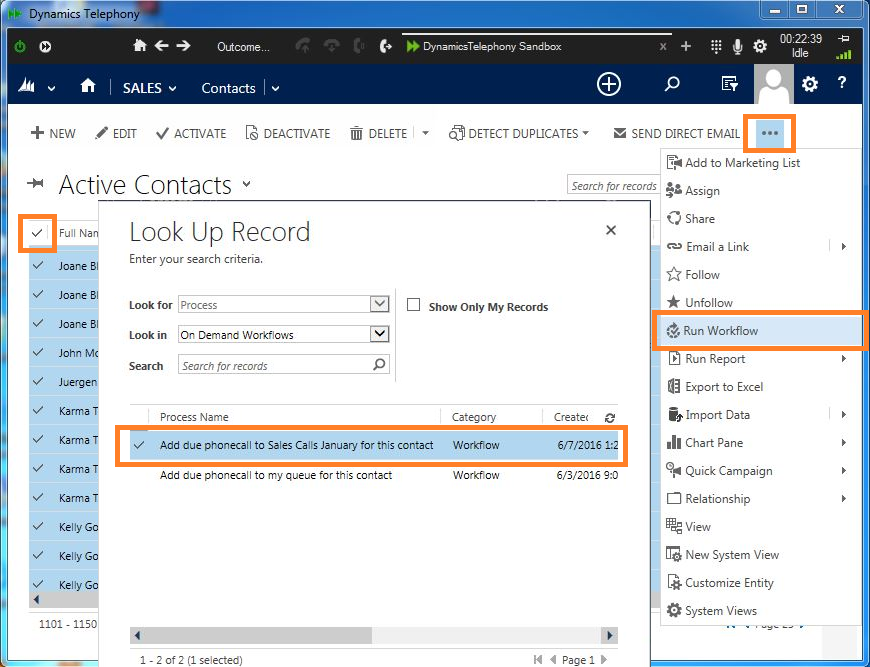
A more specific search can also be done using Advanced Find to get the leads that you need. Start by opening the Advanced Find window.
Next, make the selections needed in order to get the desired results. In this case, the search is for Contacts that have an Full Name which Equals the text Mary.
Click Results to bring back all the contacts which fit the search, then run the workflow.
How to make the workflow
Two workflows are required for this to work correctly. An on-demand workflow as well as a child workflow must be created. The reason for this is to access the current user.
First, create the child workflow as per the screenshot below.
Step 1 is to click Add Step and select Create Record. Enter a short description of the step and select Phone Call from the dropdown menu. Click Set Properties and enter the fields as per the screenshot below.
Step 2 is to create another record. Enter a description again and select Queue Item from the dropdown. Click Set Properties and enter the fields as per the screenshot below.
In the queue field, lookup and select the name of the queue where you want the queue item to go.
Now that the child workflow has been created and saved, the next task is to create the on-demand process which will call the child process.
Create a new workflow as per the screenshot below. This workflow is on-demand and uses entity contact.
Step 1 is to update the contact so the “Modified By” user gets set to the current user. In this way, the next step can get the current user. This is a well known trick to access the current user.
Step 2 is Start Child Workflow. Select Contact from the dropdown to see the child processes on a contact entity. Then select the child process for the next selection by clicking the lookup.
See the screenshot below.
Once complete, ensure to activate both workflows.



